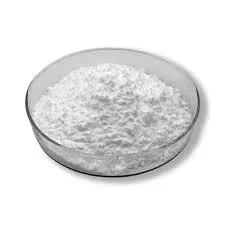
Th12 . 31, 2024 01:21 Back to list
Exploring Various Types of HPMC and Their Applications in Modern Industry
Understanding HPMC Types A Comprehensive Overview
Hydroxypropyl Methylcellulose (HPMC) is a synthetic polymer derived from cellulose, a natural polymer found in plant cell walls. HPMC is widely used in various industries, including pharmaceuticals, food, construction, and cosmetics, owing to its unique properties such as viscosity, film-forming ability, and water solubility. Its versatility is largely attributed to its different types, which are categorized based on their unique chemical modifications and applications. In this article, we will explore the various types of HPMC, their characteristics, and their uses.
Types of HPMC
HPMC can be divided into several types based on factors like methoxy and hydroxypropyl content, viscosity, and intended application. The most common classifications include
1. Based on Viscosity HPMC is often available in a range of viscosities, which makes it suitable for various applications - Low Viscosity HPMC Typically, these grades have a viscosity less than 1000 mPa·s. They are ideal for applications requiring quick hydration and are commonly used in certain food products and pharmaceutical formulations. - Medium Viscosity HPMC Ranging from 1000 to 5000 mPa·s, this type is often utilized in construction products, such as tile adhesives and wall plasters, where a good balance of workability and adhesion is necessary. - High Viscosity HPMC With viscosities exceeding 5000 mPa·s, high viscosity HPMC is primarily used in applications requiring thicker solutions, like certain cosmetic formulations and high-performance building materials.
2. Based on Methoxy and Hydroxypropyl Content The chemical structure of HPMC varies depending on the levels of methoxy and hydroxypropyl groups - Low Substitution HPMC (less than 19% methoxy and around 4% hydroxypropyl) This type offers excellent thermal stability and gelling properties, making it suitable for specific pharmaceutical applications, including controlled release formulations. - Medium Substitution HPMC (19-24% methoxy and 4-10% hydroxypropyl) This category balances gelling ability with solution viscosity, making it ideal for various applications including food thickeners and emulsifiers. - High Substitution HPMC (24-30% methoxy and more than 10% hydroxypropyl) High substitution types have superior water solubility and are typically used in applications requiring a fast-dispersing agent, such as in certain coatings and personal care products.
Applications of HPMC
hpmc types

The diverse types of HPMC serve different industrial needs
- Pharmaceuticals In the pharmaceutical industry, HPMC is primarily used as a binder, coating agent, and controlled-release agent in tablets and capsules. Its ability to form gels helps in modifying the drug release profiles, thus enhancing bioavailability.
- Food Industry HPMC is employed as a thickening agent, emulsifier, and stabilizer in food products. It provides a desirable texture and viscosity in items such as sauces, dressings, and gluten-free baked goods.
- Construction In construction, HPMC plays a crucial role in improving workability, adhesion, and water retention in cement-based products like tile adhesives, joint compounds, and plaster. Its water-retaining properties ensure that the mix remains workable for extended periods.
- Cosmetics and Personal Care HPMC is commonly used in lotions, creams, and shampoos due to its thickening properties and ability to form a smooth, spreadable texture. It helps improve the stability of emulsions and enhances the overall feel of cosmetic products on the skin.
Conclusion
Hydroxypropyl Methylcellulose is a multifunctional excipient with unique properties that make it indispensable across various industries. Understanding the different types of HPMC and their applications allows manufacturers and formulators to select the most appropriate grade for their specific needs. As the demand for high-quality, versatile ingredients continues to grow, HPMC will undoubtedly maintain its position as a key player in both emerging and established markets. Whether in pharmaceuticals, food, construction, or cosmetics, HPMC proves its worth time and time again, molding the way we approach formulation and product development.
-
Versatile Hpmc Uses in Different Industries
NewsJun.19,2025
-
Redispersible Powder's Role in Enhancing Durability of Construction Products
NewsJun.19,2025
-
Hydroxyethyl Cellulose Applications Driving Green Industrial Processes
NewsJun.19,2025
-
Exploring Different Redispersible Polymer Powder
NewsJun.19,2025
-
Choosing the Right Mortar Bonding Agent
NewsJun.19,2025
-
Applications and Significance of China Hpmc in Modern Industries
NewsJun.19,2025







